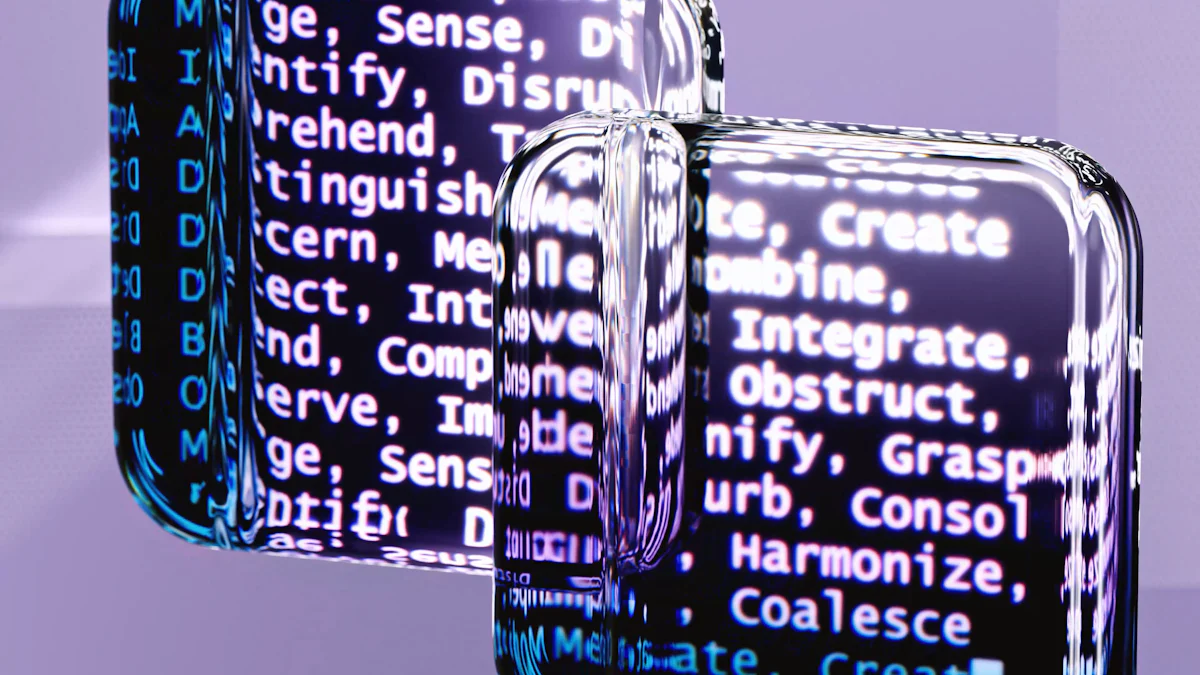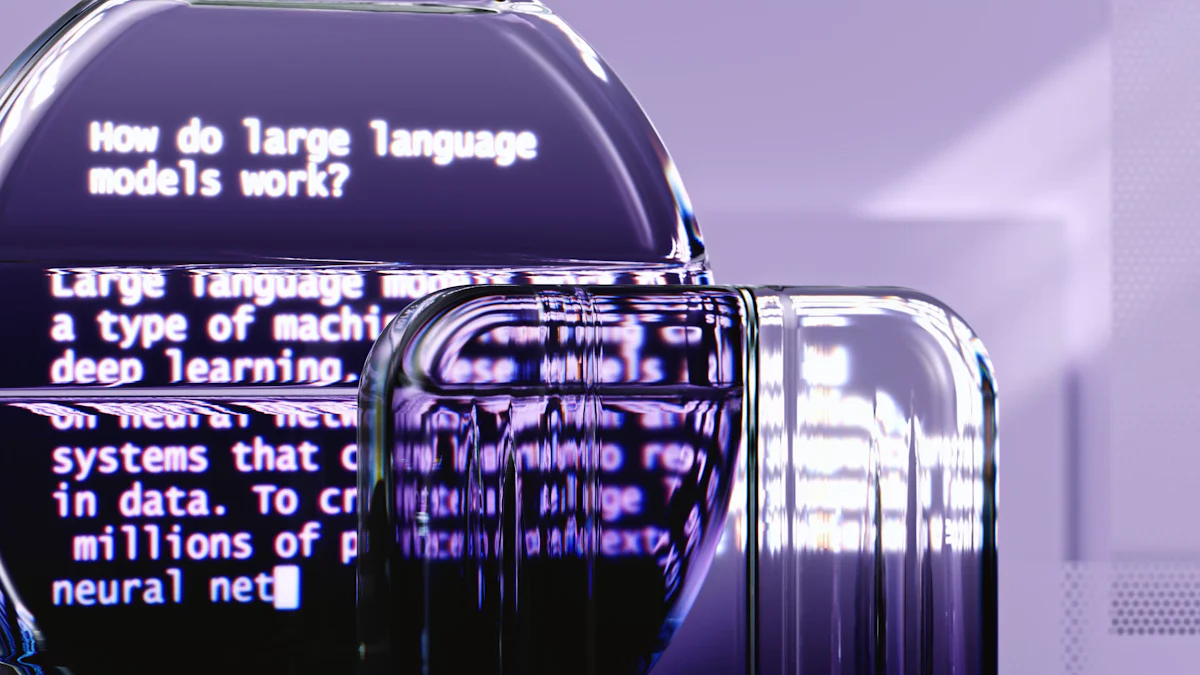How Generative AI is Revolutionizing Educational Content Creation

Generative AI is changing how you experience education. Imagine having access to personalized learning materials that cater to your unique needs. This technology allows educators to create engaging content quickly and efficiently. For instance, AI-powered tools can improve student engagement through interactive chatbots and real-time feedback. These advancements not only enhance learning but also support educators by saving time on administrative tasks. With Generative AI, you can enjoy a more dynamic and tailored educational experience, making learning both fun and effective.
Understanding Generative AI
Generative AI is a fascinating technology that's reshaping the educational landscape. Let's dive into what it is and how it works.
Definition and Key Concepts
What is Generative AI?
Generative AI refers to a type of artificial intelligence that can create new content. This content can be text, images, or even music. You might think of it as a creative assistant that helps generate ideas and materials. In education, it plays a crucial role by producing personalized learning materials tailored to each student's needs. This personalization enhances the learning experience, making it more engaging and effective.
How it Works
Generative AI operates using complex algorithms and vast amounts of data. It learns patterns and structures from existing content. Then, it uses this knowledge to create new content. For example, when you input a topic, the AI can generate a detailed article or lesson plan. This process involves neural networks, which mimic the human brain's way of processing information. As a result, the AI can produce content that feels natural and relevant.
Types of Generative AI
Generative AI comes in various forms, each with unique capabilities. Let's explore some of the most common types.
Text Generation
Text generation is one of the most popular applications of Generative AI. It can write essays, create quizzes, and even draft emails. Imagine having an AI that helps you with your homework by providing explanations and summaries. This capability saves time and allows educators to focus on more strategic tasks. According to a study in the Lore Blog, Generative AI enables the creation of adaptive learning materials, transforming the education sector by empowering educators to create personalized learning experiences.
Image and Video Creation
Generative AI isn't limited to text. It can also create images and videos. This ability opens up new possibilities for visual learning. You can have AI-generated illustrations for textbooks or educational videos that explain complex concepts. These visual aids make learning more accessible and enjoyable. The Rod Trent's Substack highlights how Generative AI offers innovative pedagogical approaches, including adaptive teaching and personalized learning paths.
By understanding these aspects of Generative AI, you can appreciate its potential to revolutionize education. It not only enhances learning but also supports educators by automating routine tasks. As you explore this technology, you'll discover how it can make education more dynamic and personalized.
The Role of Generative AI in Education
Generative AI is transforming how you learn by enhancing educational materials and automating content creation. Let's explore how this technology plays a crucial role in education.
Enhancing Learning Materials
Personalized Content
Generative AI tailors learning materials to fit your unique needs. Imagine having textbooks or study guides that adapt to your learning pace and style. This personalization makes learning more engaging and effective. For example, a private international school in Asia used a Generative AI platform to create multilingual educational content. This approach led to a 15% increase in student enrollment and improved learning outcomes for non-native English speakers. By customizing content, Generative AI ensures that you receive the most relevant and helpful information.
Interactive Learning Experiences
Interactive learning experiences keep you engaged and motivated. Generative AI can create quizzes, simulations, and interactive lessons that make learning fun. You might find yourself exploring virtual worlds or solving real-world problems through AI-generated scenarios. These experiences help you understand complex concepts more easily. With Generative AI, learning becomes an adventure rather than a chore.
Automating Content Creation
Efficiency and Speed
Generative AI speeds up the content creation process. Educators can quickly generate lesson plans, quizzes, and other materials. This efficiency allows teachers to focus more on teaching and less on administrative tasks. You benefit from up-to-date and high-quality content without long waiting times. The technology ensures that educational materials are always fresh and relevant.
Cost-Effectiveness
Creating educational content can be expensive. Generative AI reduces these costs by automating the process. Schools and educators save money on resources and materials. This cost-effectiveness means more funds can be allocated to other important areas, such as improving facilities or investing in new technologies. You get access to quality education without the burden of high costs.
Generative AI is revolutionizing education by making learning materials more personalized and interactive. It also automates content creation, providing efficiency and cost savings. As you experience these advancements, you'll find that learning becomes more enjoyable and accessible.
Benefits of Generative AI in Educational Content

Generative AI is transforming education by making it more accessible and innovative. Let's explore how this technology benefits educational content.
Accessibility and Inclusivity
Language Translation
Generative AI breaks down language barriers in education. It can translate educational materials into multiple languages, making learning accessible to students worldwide. Imagine reading a textbook in your native language, even if it was originally written in another. This capability ensures that you understand the content fully, regardless of your language background. By providing accurate translations, Generative AI promotes inclusivity and helps you learn more effectively.
Adaptive Learning
Generative AI tailors learning experiences to your unique needs. It analyzes your performance and adapts the content accordingly. If you struggle with a particular topic, the AI provides additional resources and exercises to help you improve. This personalized approach ensures that you receive the support you need to succeed. Unlike traditional methods, which offer a one-size-fits-all approach, Generative AI adapts to your learning style and pace, making education more effective and enjoyable.
Innovation in Teaching Methods
Gamification
Generative AI introduces gamification into education, making learning fun and engaging. It creates interactive games and challenges that motivate you to learn. Imagine earning points or badges for completing lessons or solving problems. This approach turns learning into an exciting adventure, encouraging you to explore new topics and develop critical thinking skills. By incorporating game elements, Generative AI enhances your motivation and keeps you engaged in the learning process.
Virtual Reality Integration
Generative AI brings virtual reality (VR) into the classroom, offering immersive learning experiences. You can explore historical sites, conduct science experiments, or visit distant planets without leaving your home. This technology makes abstract concepts tangible and memorable. By integrating VR, Generative AI provides you with a deeper understanding of complex subjects. It transforms education from a passive experience into an interactive journey, allowing you to learn by doing.
Generative AI revolutionizes educational content by enhancing accessibility and fostering innovation. It breaks down language barriers, adapts to your learning needs, and introduces exciting teaching methods. As you embrace these advancements, you'll find that learning becomes more inclusive, engaging, and effective.
Challenges and Limitations
Generative AI brings exciting possibilities to education, but it also presents challenges and limitations. Let's explore some of these hurdles.
Quality Control
Ensuring the quality of AI-generated content is crucial. You want accurate and reliable educational materials, right? However, AI can sometimes produce content with errors or biases.
Ensuring Accuracy
Accuracy is vital in educational content. AI models learn from vast datasets, but they can still make mistakes. For example, they might generate incorrect information or misinterpret complex topics. As a student, you rely on accurate materials to learn effectively. Educators must review AI-generated content to ensure its correctness. This step helps maintain the integrity of your learning experience.
Maintaining Educational Standards
Educational standards guide what you learn and how you learn it. AI-generated content must align with these standards. Sometimes, AI might create materials that don't meet the required educational criteria. Teachers and educators play a key role in reviewing and adjusting AI-generated content. They ensure that it adheres to the curriculum and supports your learning goals.
Dependency on Technology
Generative AI relies heavily on technology. This dependency can pose challenges, especially in educational settings.
Infrastructure Requirements
To use AI effectively, schools need the right infrastructure. This includes computers, internet access, and software. Not all schools have the resources to support these requirements. You might face limitations if your school lacks the necessary technology. Bridging this gap is essential to ensure that all students benefit from AI advancements.
Teacher Training
Teachers are vital in integrating AI into education. They need training to use AI tools effectively. Without proper training, teachers might struggle to incorporate AI into their teaching methods. This can affect your learning experience. Schools should invest in teacher training programs. These programs help educators understand AI's potential and how to use it to enhance your education.
Generative AI offers incredible opportunities for education, but it also comes with challenges. Ensuring quality and accuracy in AI-generated content is essential. Schools must address infrastructure needs and provide teacher training to maximize AI's benefits. By overcoming these challenges, you can enjoy a more dynamic and effective learning experience.
Ethical Considerations
Generative AI in education brings exciting possibilities, but it also raises important ethical questions. Let's explore these considerations to ensure a responsible and fair use of AI.
Data Privacy Concerns
When you use AI in education, your data becomes a valuable resource. Protecting this data is crucial to maintaining trust and ensuring a safe learning environment.
Student Data Protection
Your personal information, such as learning habits and performance, gets collected by AI systems. This data helps tailor educational content to your needs. However, it also poses privacy risks. Schools and educators must implement strong data protection measures. They should ensure that your information remains secure and confidential. By doing so, they can prevent unauthorized access and misuse of your data.
Ethical Use of AI
AI tools should respect your privacy and autonomy. Educators must use AI ethically, ensuring that it benefits you without compromising your rights. This involves being transparent about how AI systems work and what data they collect. You should have the right to know how your information gets used and the ability to opt out if you choose. Ethical AI use fosters a positive learning environment where you feel safe and respected.
Bias and Fairness
AI systems can sometimes reflect biases present in the data they learn from. Addressing these biases is essential to ensure fair and equitable education for all students.
Addressing Algorithmic Bias
AI models might inadvertently produce biased content. For example, they could favor certain groups over others based on the data they analyze. Educators must actively identify and correct these biases. By doing so, they can ensure that AI-generated materials remain fair and unbiased. This process involves regularly reviewing and updating AI algorithms to promote equality and inclusivity.
Ensuring Fair Representation
AI should represent diverse perspectives and experiences. It must provide content that reflects the richness of different cultures, backgrounds, and viewpoints. Educators play a key role in ensuring that AI-generated materials offer fair representation. They should strive to create an inclusive learning environment where all voices get heard and valued.
"By addressing these ethical considerations, we can harness the transformative potential of generative AI in education while upholding the core values of quality, fairness, and the well-being of both students and teachers."
Generative AI offers incredible opportunities for education, but it also comes with ethical challenges. By focusing on data privacy and fairness, educators can create a learning environment that respects your rights and promotes equality. As you engage with AI-driven educational tools, you'll benefit from a more inclusive and responsible approach to learning.
Future Trends in Generative AI for Education
Generative AI is not just a tool for today; it's shaping the future of education. Let's explore some emerging technologies and their long-term implications.
Emerging Technologies
AI-Driven Assessments
Imagine assessments that adapt to your learning style and pace. AI-driven assessments can do just that. They analyze your performance in real-time and adjust the difficulty of questions accordingly. This personalized approach helps you learn more effectively by focusing on areas where you need improvement. AI-driven assessments also provide instant feedback, allowing you to understand your mistakes and learn from them immediately. This technology transforms traditional testing methods, making them more dynamic and student-centered.
Real-Time Feedback Systems
Real-time feedback systems powered by Generative AI offer immediate insights into your learning progress. These systems monitor your activities and provide suggestions to enhance your understanding. For instance, if you're struggling with a math problem, the AI can offer hints or alternative explanations. This instant feedback keeps you engaged and motivated, as you can see your progress and address challenges right away. Real-time feedback systems make learning more interactive and responsive to your needs.
Long-Term Implications
Shaping Future Curriculums
Generative AI has the potential to reshape curriculums by integrating more personalized and adaptive learning paths. Educators can use AI to design courses that cater to diverse learning styles and preferences. This flexibility allows you to explore subjects at your own pace and delve deeper into areas of interest. As AI continues to evolve, curriculums will become more tailored to individual needs, promoting creativity and higher-order thinking skills. This shift empowers you to take charge of your learning journey and develop critical skills for the future.
Preparing Students for AI-Driven World
In an AI-driven world, students need to be equipped with the right skills and knowledge. Generative AI plays a crucial role in preparing you for this future. By incorporating AI tools into education, you gain hands-on experience with cutting-edge technology. This exposure helps you understand how AI works and its applications in various fields. As you become familiar with AI, you'll be better prepared to navigate an increasingly digital world. Embracing AI in education ensures that you're ready to thrive in a rapidly changing landscape.
Generative AI is paving the way for exciting advancements in education. From AI-driven assessments to real-time feedback systems, these technologies enhance your learning experience. As curriculums evolve and students prepare for an AI-driven world, you'll find that education becomes more personalized and empowering. The future of learning is bright, and Generative AI is at the forefront of this transformation.
Case Studies and Examples

Generative AI is making waves in education, and real-world examples show its potential. Let's dive into some successful implementations and lessons learned.
Successful Implementations
Use of AI in Adaptive Learning Platforms
Adaptive learning platforms powered by AI are changing how you learn. These platforms analyze your performance and tailor lessons to fit your needs. For instance, a middle school implemented an AI-powered math tutoring system. This system examined students' learning styles and areas of difficulty. It then generated personalized lesson plans and practice exercises. As a result, students saw a 20% improvement in math proficiency. This approach ensures you receive the right support, helping you excel in subjects that challenge you.
AI-Enhanced Language Learning Tools
Language learning becomes more engaging with AI-enhanced tools. These tools offer personalized lessons based on your progress and preferences. Imagine using an app that adapts to your learning pace, providing exercises that match your skill level. One school used AI to create multilingual content, leading to a 15% increase in student enrollment. This success shows how AI can break language barriers and make learning more accessible. You get to learn at your own pace, making the process enjoyable and effective.
Lessons Learned
Best Practices
Implementing AI in education requires careful planning. Here are some best practices to consider:
Start Small: Begin with pilot programs to test AI tools before full-scale implementation. This approach helps identify potential challenges and refine strategies.
Involve Educators: Teachers play a crucial role in integrating AI into classrooms. Provide training and support to help them use AI tools effectively.
Focus on Personalization: Use AI to create customized learning experiences. Tailor content to meet individual student needs, enhancing engagement and outcomes.
By following these practices, you can maximize the benefits of AI in education.
Common Pitfalls
While AI offers many advantages, there are pitfalls to avoid:
Overreliance on Technology: Balance AI use with traditional teaching methods. Ensure that technology complements, rather than replaces, human interaction.
Data Privacy Concerns: Protect student data by implementing strong security measures. Transparency about data collection and usage builds trust.
Bias in AI Systems: Regularly review AI algorithms to address potential biases. Ensure that content remains fair and inclusive for all students.
Avoiding these pitfalls ensures a smooth integration of AI into educational settings, providing you with a more enriching learning experience.
"Generative AI empowers educators to create personalized learning experiences, automate tasks, and enhance classroom engagement. By learning from successful implementations and avoiding common pitfalls, you can harness AI's full potential in education."
Generative AI is reshaping educational content creation. You can now enjoy personalized learning experiences that cater to your unique needs. This technology saves educators time on administrative tasks, allowing them to focus more on teaching. It also enhances teaching effectiveness by providing real-time feedback and improving assessments. As AI continues to evolve, it offers better support for students with special needs and transforms traditional teaching methods. Embrace these advancements and encourage educators and policymakers to integrate AI into education. Together, you can drive student success and create a more engaging learning environment.
See Also
The Impact of Generative AI on Artistic Revolution
Utilizing Statistical Models in Generative AI Content Creation
Harnessing Generative AI in Content Marketing Strategies
